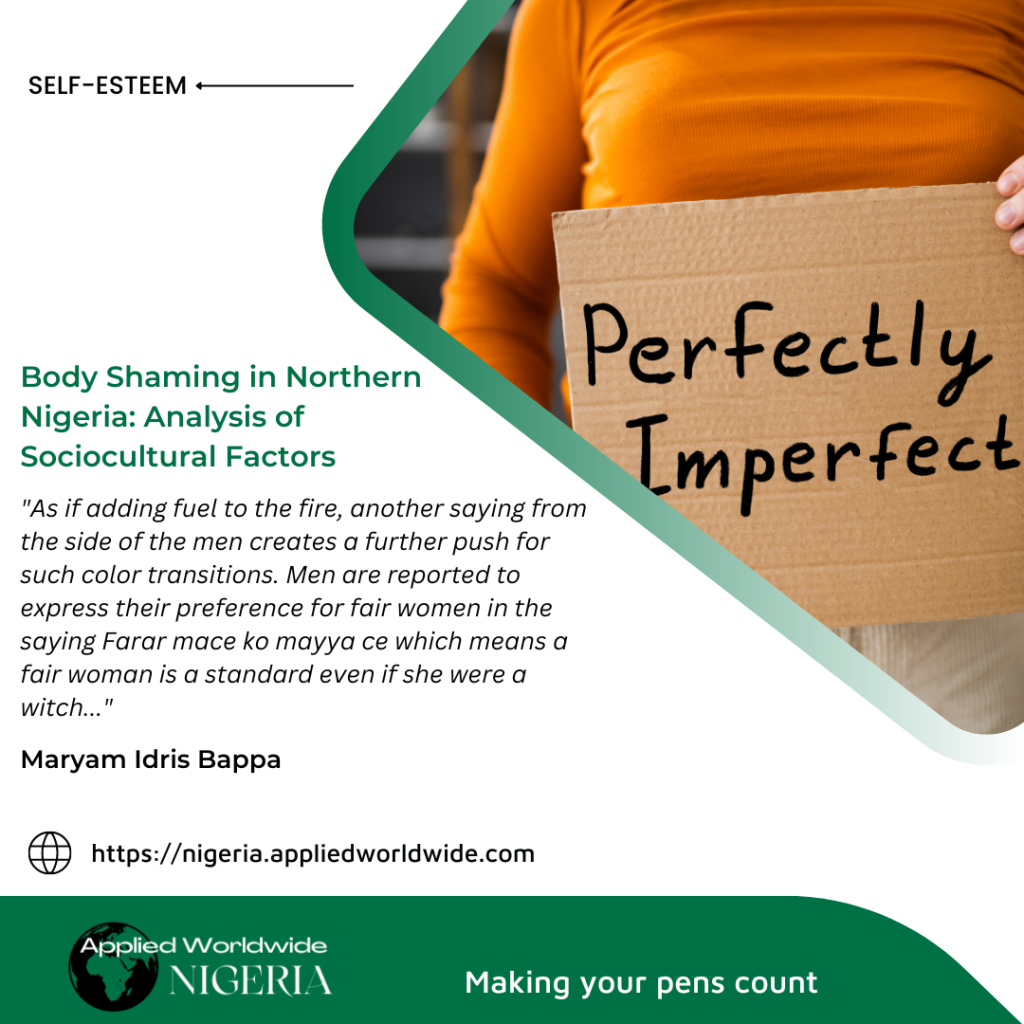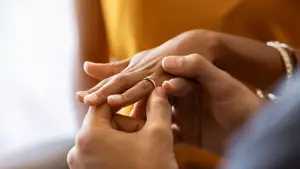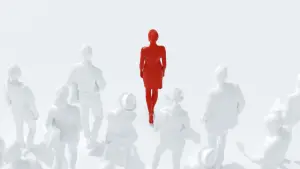If poverty is a universal problem found in every country of the world, then body shaming is also a social problem found in every society of the world.
Body shaming involves negative comments about one’s or other people’s bodies in a way that causes them emotional discomfort. Just like most other social problems, it is hard to trace the origins of such problems. but with some documented studies, we are able to study and understand the trend such problems follow over the years.
In Northern Nigeria, especially the predominantly Hausa-speaking part of the region, the problem of body shaming is found to exist in bits and traces of the region’s social and cultural fabric.
The effects of body shaming include anxiety, depression, low self-esteem, recycling of body shaming, people going to extreme lengths for body modification, and even suicide.

For the purpose of this essay, which attempts to undertake a foray into these socio-cultural factors of body shaming in Northern Nigeria, the issue will be discussed under these broad subheadings:
1. Family
2. Weddings/Marriages
3. Food
4. Clothing & Fashion
5. Entertainment
Socio-cultural factors of body shaming in Northern Nigeria
- Family
The family is the smallest unit of society and arguably the most important institution that shapes the larger community. The Hausa people are very family-centric owing partly to their Islamic religious teaching that encourages the strengthening of familial bonds.
This strong affinity that the Hausa people have for the maintenance of ties of kinship is not without its social implications on relations and dynamics.
Many times, traces of body shaming are noticeable at the family level right from the time of birth. The Hausa people have a practice called Barka which is basically the act of visiting a house in which a new baby is birthed to share felicitations and well wishes. Unfortunately, what ought to be a positive social function often serves as an avenue for comments on the physical looks of the baby.
While such comments are largely positive, involving hits on whom the baby looks most alike, others are not very much so. Comments on the size and shapes of babies’ heads and noses are common objects of subtle body shaming. In cases where babies have unusually large heads, visitors can be heard uttering in hush voices a superstitious remark that the child is a Dan Ruwa meaning the child is possessed by water spirits.
Additionally, when a child is birthed prematurely or as doctors call it, pre-term, the Hausa people have a not-so-fancy name with which such babies are referred to, Bakwaini. Or babies who have overstayed in the womb long after the mother’s expected day of delivery is called Shekarau. These terms come to bear lasting marks on such babies serving as parameters around which the growth and development of such children are gauged. It is also common to hear children with a small frame referred to as Bakwaini, a term that is not found appealing to anyone addressed as such.
It is worth noting that such remarks are not only received by visiting family members or other well-wishers but it is often echoed by the very family members with whom such children live. A strategy that attempts to prepare the children against the outside world by forcing them to accept their physical appearances often turns out to be a toxic input in their emotional growth.
Later in life, visitors are also in the habit of commenting on children’s looks when they visit. Comments like ” You don’t grow” for frail children or “you will soon carry your siblings on the back” for chubby children are thrown directly or indirectly at children. Making them detests those visits
- Marriage/Weddings
Marriage is an important institution all around the world. An establishment through which generations are procreated and traditions conserved. The place of weddings and marriages in the Hausa society is very much pronounced.
Much effort is put into the training and preparation of members of the society especially the womenfolk for this lifetime achievement (as it is regarded by many).
Elements of body shaming manifest in this regard when prospective lovers seek to tie the knot but have some disparities in their physical appearances. It is often an issue of exaggerated mismatch when a man with a small body build seeks the hand of a woman noticeably bigger than himself. When pre-wedding photoshoots of such couples make it to social media, the comments are uncharitable, to say the least, with some comments bordering on outright sexual harassment.
It is important to note that never has a Waliy been reported to reject a Wakeel’s request for the hand of a maiden in marriage over such trivialities. But the affairs between Wakeel and Waliy are confined to the mosque and guided by strict Islamic rulings which frown upon body shaming. The same can not be said for what happens behind the scenes at home in preparing a bride for her matrimonial home. A whole industry that specializes in body beautification and other enhancements is on the rise in northern Nigeria. The cause of this rise in demand for body enhancements is directly attributable to the prevalence of body shaming both on and offline.
A large population of women who are not comfortable with the color of their skin or the shape of their bodies has been unleashed upon the social scape of northern Nigeria. There is a common saying in the north that says Farar Mace Alkyabbar Mata which means a fair woman is the seal of feminine beauty. This particular saying is responsible for the frenzy toward skin whitening happening in the region. The problem has reached epidemic status in some northern States.
As if adding fuel to the fire, another saying from the side of the men creates a further push for such color transitions. Men are reported to express their preference for fair women in the saying Farar mace ko mayya ce which means a fair woman is a standard even if she were a witch.
In some instances, some brides are subjected to a process called fattening in order to make them chubby and fit the established beauty standards of the time. While on the other hand women on the high side of weight and fat are subjected to a rigorous process of shedding weight. It is believed by some women that a certain body weight is more desirable for fertility.
There is pressure on brides to look their best on the wedding day and as such some brides resort to using corsets to maintain a flat tummy, or fake hips and padded bras to create an illusion of a silhouette that fits expected standards.
The practice of Buden Kai and Sa Lalle are very important parts of Hausa wedding traditions. The former involves the official unveiling of the bride to the eyes of her in-laws while the latter involves the celebration of the application of henna on the bride. These are traditions that come with some level of expectations and in an attempt to live up to the moments, brides resort to the earlier-mentioned practices. The belief that henna looks best on fair skin also pushes some brides into whitening their skin for such events no thanks to the constant display of fair brides in Henna by Bollywood (a widely watched movie industry in the north).
These norms and beliefs that inform certain standards of beauty in the region underscore the influence of sociology and culture in the practice of body shaming in northern Nigeria.
- Food
Food is a very important part of what defines a person. It nourishes the body and soul. The Hausa people place a premium on eating adequately and healthily. Some of the most common food in Hausa land are Tuwo, Danwake, Gurasa, Dambu, Masa, and Fate.
In traditional Hausa settings, children are organized to eat from the same plate in order to foster love and a spirit of togetherness between them. In such organized general eating, undue remarks are made on the amount of food consumed by persons with different body sizes. Petite persons are forcefully made to eat more rations in order to get chubbier while chubby persons are emotionally blackmailed into eating smaller portions of food in order to reduce weight.
There is a Hausa saying that goes Dogo Zauren Yunwa. Meaning a tall person is a mine hole of hunger. For this reason, tall persons sometimes get served unusually large portions of food because it is believed they consume a lot. Such actions cause embarrassment to tall persons especially when served food in public.
- Clothing and Fashion
Clothing and fashion are simply the physical outlooks we maintain in our relations with the outer world. It is often believed that one is addressed by the way he is dressed. These elements form a very important part of the Hausa social culture.
The Hausa attire is mostly designed in a way that conceals the body features of its wearer. From Babbanriga to Hijab and Kaftans, the Hausa people are known for shyness and concealment of beauty.
However, despite such reputed concealment, adornments are a very important part of the lifestyle, especially in their private quarters. The women are known for elaborate Henna, exquisite braid designs, bangles, necklaces, anklets, and facial marks.
These fashion elements are said to fit certain body, skin, and hair types better than others. Long hair for example is a reputed beauty standard among the Hausas and women not endowed with long hair are at the receiving end of some unprintable remarks about their hair. Red henna is made to be an exclusive reserve of fair-skinned ladies while certain fitted gowns are monopolized by women with particular body shapes.
Some tailors, henna designers, and hair stylists contribute to killing the self-esteem of their prospective customers by discouraging them albeit tactically from patronizing certain styles.
- Entertainment
All work with no play makes Jack a dull boy. In the North, entertainment is a key part of the region’s sociocultural tapestry. The region has no shortage of renowned traditional singers, actors and actresses, dramatists, and praise singers.
In Kannywood for example, which is the apex film entertainment industry of the region, elements and substance of body shaming seem to be ingrained especially in their comedy movies. Dwarves are made a subject of ridicule and entertainment while the comedians throw jabs at one another focusing primarily on their distinct body features.
Such unrestrained comments on a person’s body anatomy translate into inspiring children on the street to easily throw jabs at one another when engaged in sports or other street games.
Although elders do try to discourage such repugnant behavior among children, the psyche that shames a chubby kid when beaten by a smaller kid leaves emotional scars in the minds of the kids. The popular response to a chubby kid when beaten by a smaller boy is to be termed a Holoko: Hadarin Kaka which means an empty vessel.
The beauty standards of a community are mostly determined by the predominant physical looks of the people. For the northern Nigerian people, it is mostly the Hausa Fulani people. who are fair, slim-chubby, and have varieties of hair lengths.
However, association with foreign standards through films has widened the scope of these standards and we have adopted some of their own. For example, the Americans prioritize slim people in their movies while the Indians prioritize fair and tall people. The combination of these standards has created daydream images of partners in the minds of our youth.
Summary of Key Observations
- Body shaming starts right from birth and sometimes with the support of other close family members.
- Social functions often serve as an avenue to spread gossip and unprintable remarks about the body build of some people.
- Name-calling is a common yet underlooked form of body shaming.
- Women are mostly at the receiving end of body shaming.
- Wedding rites and processes place much emotional pressure on especially brides to fit into beauty standards.
- The social preference for fair women creates a spiraling effect on social relations.
- Food sometimes serves as a medium through which subtle body-shaming remarks are made.
- Some clothing and fashion are prohibited for persons who do not fit into society’s accepted beauty standard.
- The entertainment industry plays some role in the normalization of body shaming.
- There is no recognition of the emotional trauma caused by body shaming especially in children.
Recommendations
There is a need for parents and families to recognize the negative effects of body shaming, protect their children from it and discourage any third party who makes comments on the body appearance of their children.
Women should understand and desist from falling into the pits of stereotypes that make them question their beauty and men must desist from having unrealistic expectations of women.
An environment where people will be safe and be themselves should be created. People should avoid giving unnecessary remarks about the food someone eats or unsolicited advice given to lean people to eat more food.
There is fashion for everyone and clothing can fit all body types. Designers and stylists have to be inclusive in their businesses and people should be allowed to dress as they like without negativity.
Conscious effort on the part of the film industry should be made to avoid creating content that dwells on digging comedy out of the physical characteristics of people.
People should desist from making comments about the bodies of persons they are meeting after a long time. When a person gets leaner or chubbier it may be for a variety of reasons including health challenges and as such, making comments may come off as insensitive and unwarranted.
As the common saying confirms that not all fingers are equal, so are people created in different forms, shapes, and colors. The diversity of our races and tribes is a thing that should unite us and not divide us. By accepting our differences and creating inclusive systems, we will be able to maintain a healthy and safe social environment for all.
Conclusion
It has been seen that body shaming exists even in the most unexpected of places and ways. Social beliefs and norms do give rise to the proliferation of body shaming in certain societies and because they have been accepted as the norm, it is hard to admit or accept them as being wrong. But hundreds or thousands of years of traditions are not justification for wrecking emotional trauma on innocent individuals. The solution to the problem of body shaming has to start from the lowest levels and the family has a very important role to play in this crucial task of creating a socially healthy society.






